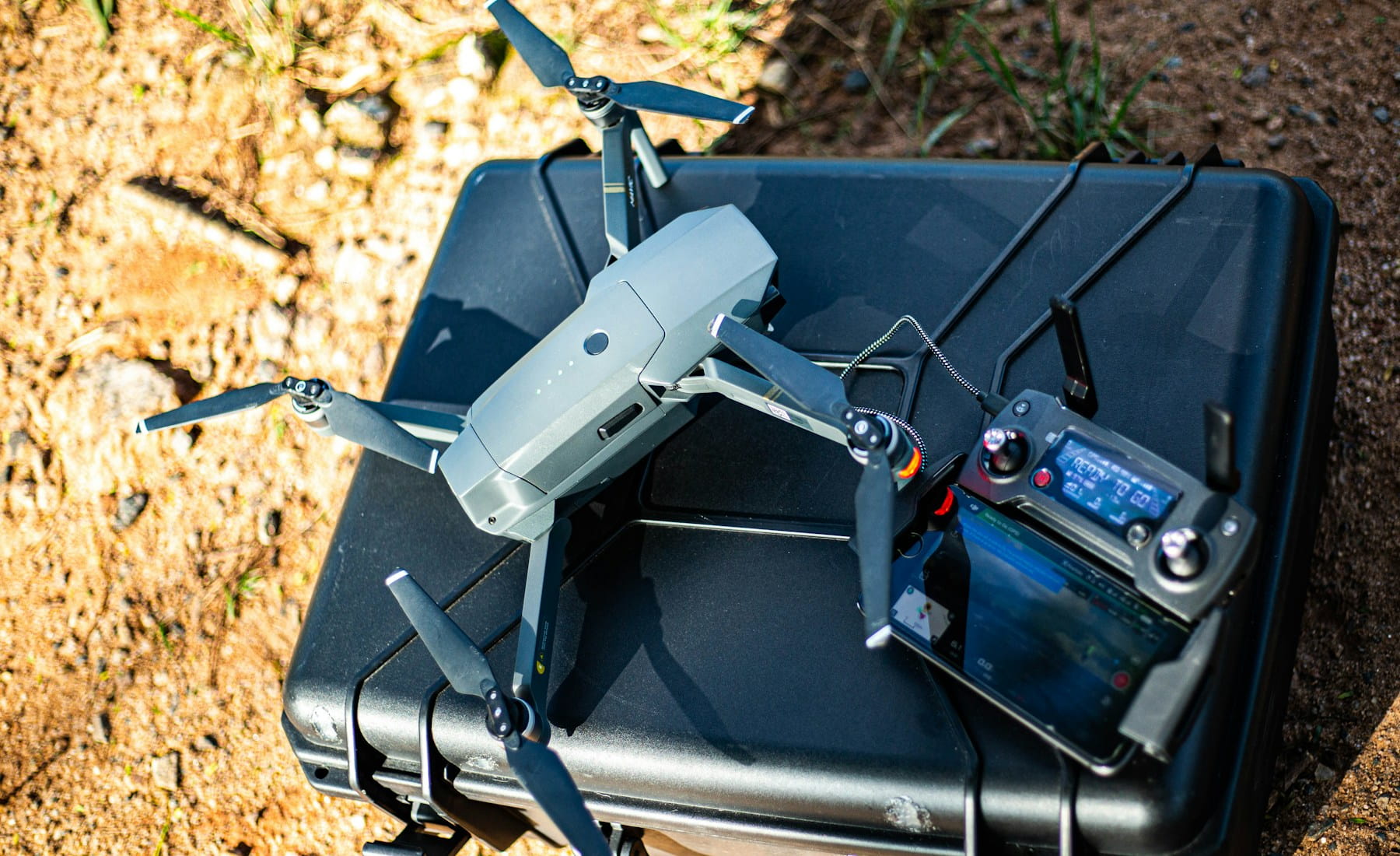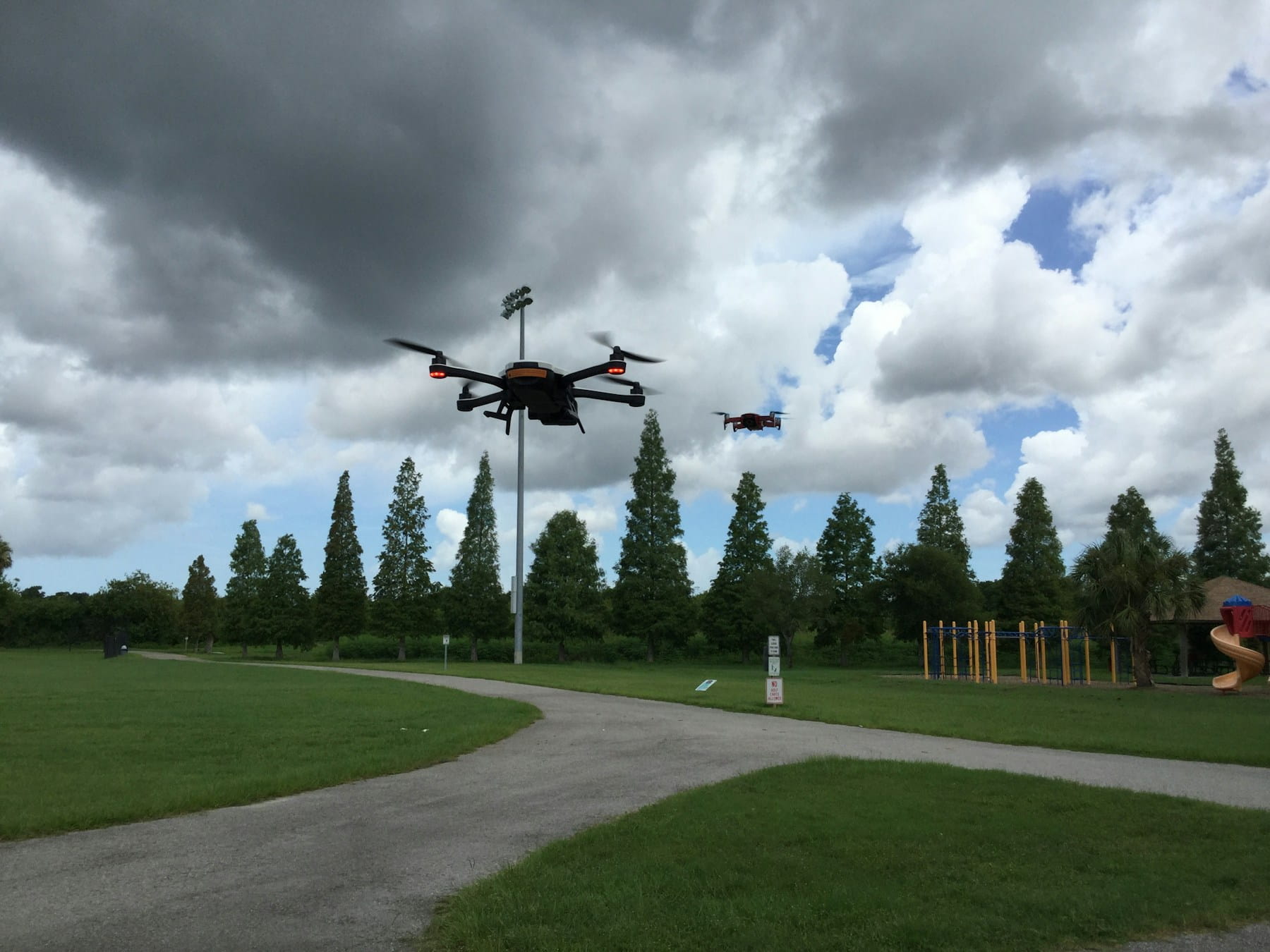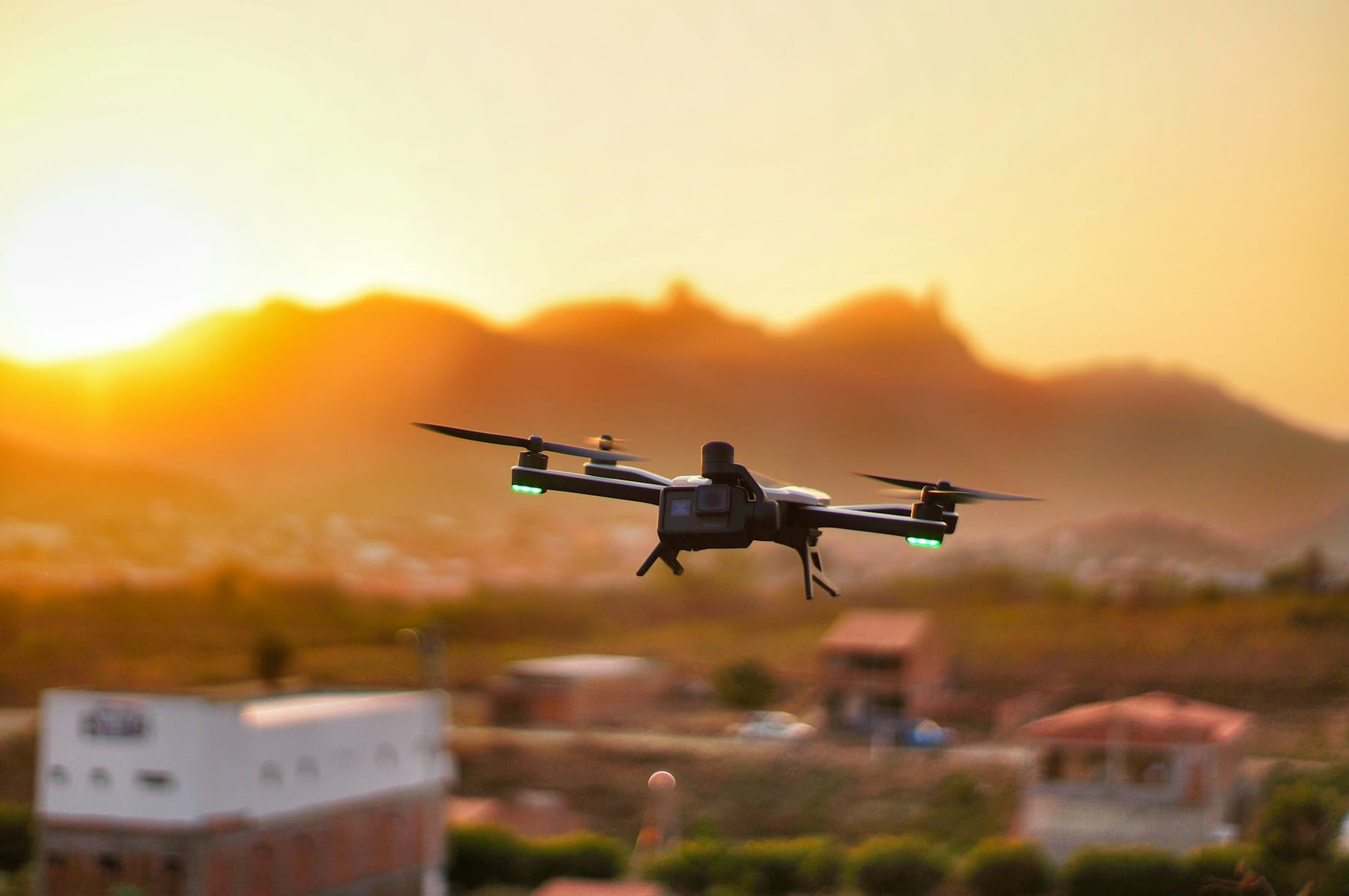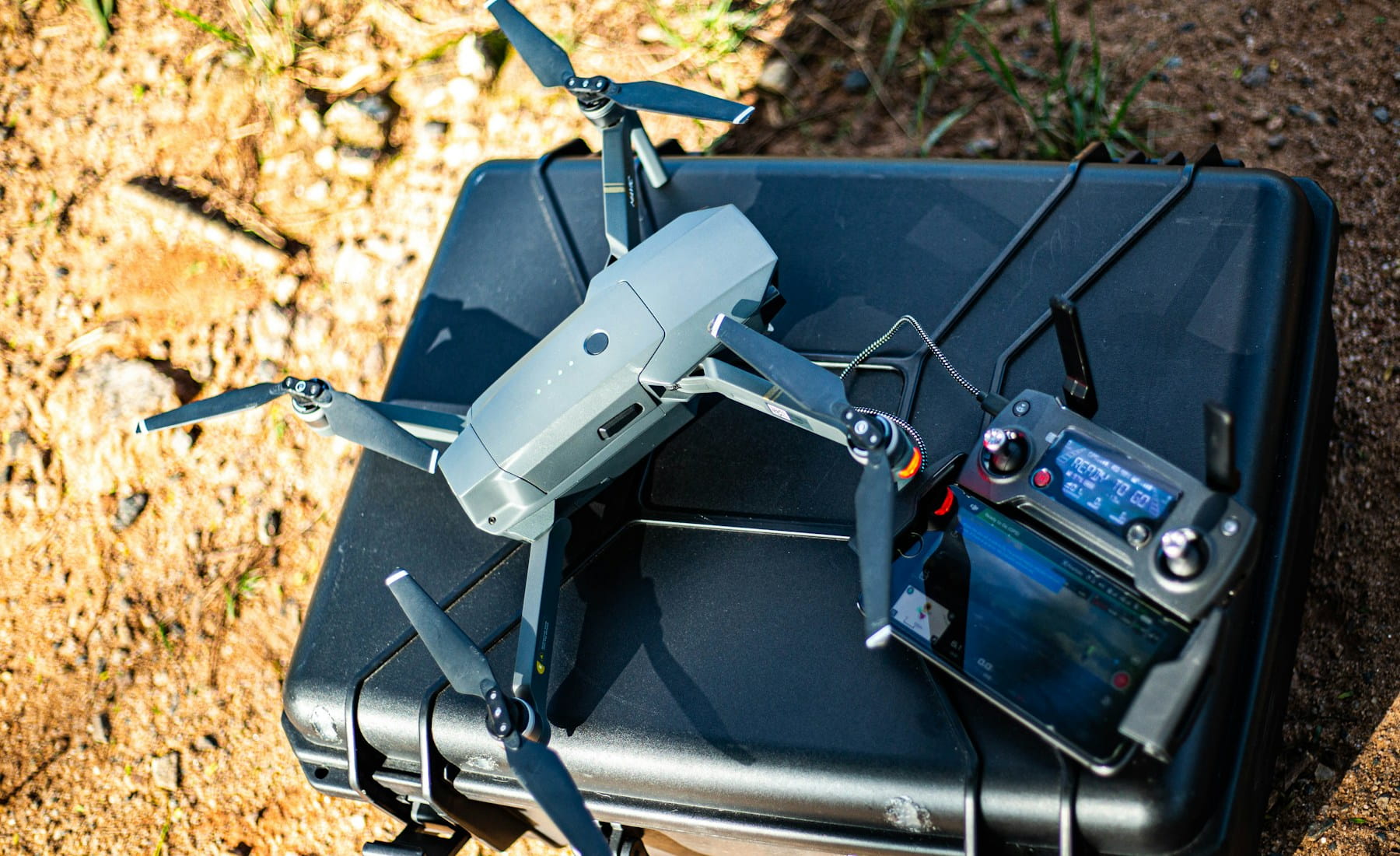What are Business Tools for Drone Companies?
Business tools for drone companies are specialized software platforms designed to manage the unique operational requirements of commercial UAV services. These solutions integrate flight planning, fleet management, compliance tracking, client relationship management, and data processing capabilities into unified systems that streamline operations, ensure regulatory compliance, and support business growth for professional drone service providers.
Running a successful commercial drone operation requires more than just flying skills and quality equipment. The most profitable drone businesses leverage specialized software solutions to streamline operations, manage compliance requirements, and scale their services effectively.
Professional drone operators face unique challenges that traditional business management tools simply weren't designed to handle. From tracking complex flight regulations to managing sophisticated equipment inventories, drone companies need purpose-built platforms that understand the intricacies of unmanned aircraft operations.
Table of contents
- Flight planning and mission management software
- Fleet management and equipment tracking tools
- Data processing and analysis platforms
- Client relationship management systems
- Compliance and regulatory tracking tools
- Financial management solutions
- Marketing and lead generation platforms
- Project documentation and reporting tools
- Insurance and risk management platforms
- Team collaboration and communication tools
- Frequently asked questions
- Implementation considerations
- In summary
Flight planning and mission management software
The foundation of any professional drone operation starts with proper flight planning. Modern commercial operators can't afford to rely on basic consumer apps when managing complex missions across multiple sites and clients.
Advanced flight planning platforms offer automated airspace checking, weather integration, and mission optimization features that save hours of preparation time. These tools automatically identify restricted zones, calculate optimal flight paths, and generate detailed mission briefs that satisfy regulatory requirements.
Some platforms integrate directly with drone hardware, allowing operators to upload flight plans directly to aircraft systems. This eliminates manual waypoint entry and reduces the risk of human error during mission execution.
Weather integration capabilities prove particularly valuable for commercial operations. Rather than checking multiple weather sources separately, comprehensive platforms pull data from aviation weather services and present it in formats specifically relevant to drone operations. Wind speeds at various altitudes, precipitation forecasts, and visibility conditions all appear in easy-to-interpret dashboards.
Mission replay features allow operators to review flight data after completion, identifying areas for improvement and documenting performance for client reports. This data becomes invaluable when scaling operations or training new team members.
Fleet management and equipment tracking tools
Professional drone companies typically operate multiple aircraft, each with different capabilities and maintenance requirements. Manual tracking quickly becomes overwhelming as fleets grow beyond a handful of units.
The drone fleet management software market is experiencing rapid expansion, with projections showing growth from $12.7 billion to $23 billion by 2033, reflecting the increasing operational complexity and scale of commercial drone operations.
Dedicated fleet management platforms maintain detailed records for each aircraft, including flight hours, maintenance schedules, and equipment configurations. Automated alerts notify operators when aircraft approach service intervals or when batteries require replacement.
Battery management represents a particular challenge for commercial operations. Lithium polymer batteries degrade over time and charge cycles, making accurate tracking essential for safety and operational efficiency. Advanced platforms monitor battery health metrics and predict replacement needs before failures occur, integrated with comprehensive maintenance schedules.
Equipment inventory tracking extends beyond aircraft to include cameras, sensors, spare parts, and ground support equipment. Bar code scanning and RFID integration streamline check-in and check-out processes, reducing equipment loss and improving accountability.
Some platforms offer GPS tracking for high-value equipment, providing real-time location data and theft alerts. This feature proves particularly valuable for companies operating in multiple locations or managing equipment used by different team members.
| Equipment Category | Tracking Requirements | Key Metrics |
|---|---|---|
| Aircraft | Flight hours, maintenance cycles | Total flights, airframe hours, component life |
| Batteries | Charge cycles, health status | Voltage levels, cycle count, capacity degradation |
| Cameras/Sensors | Usage hours, calibration dates | Operating time, last calibration, accuracy checks |
| Ground Equipment | Location, condition | Check-out status, maintenance needs, replacement schedule |
Data processing and analysis platforms
Raw drone data requires significant processing before becoming useful deliverables for clients. Professional operations generate massive amounts of imagery, video, and sensor data that must be processed efficiently to maintain profitability.
Photogrammetry software converts overlapping images into detailed 3D models, orthomosaic maps, and elevation datasets. Cloud-based processing platforms handle the computational heavy lifting, allowing operators to focus on client services rather than managing server infrastructure.
LiDAR data processing requires specialized tools that can handle point cloud datasets containing millions of measurements. These platforms classify ground points, identify vegetation, and extract detailed topographic information for surveying and mapping applications.
Thermal imaging analysis tools process infrared data for inspection services. Advanced platforms automatically identify temperature anomalies, generate heat maps, and produce reports highlighting areas requiring attention.
Video analysis platforms use artificial intelligence to identify objects, track movement, and extract actionable insights from aerial footage. These tools prove particularly valuable for security, wildlife monitoring, and traffic analysis applications.
Data storage and backup systems protect valuable client information while ensuring quick access for processing and delivery. Cloud-based solutions offer scalability and redundancy that local storage systems can't match.
Client relationship management systems
Drone service businesses rely heavily on repeat customers and referrals, making client relationship management absolutely critical for long-term success. Generic CRM platforms often lack the specialized features needed to manage drone service inquiries effectively.
Industry-specific CRM systems understand the unique sales cycle of drone services. They track project types, service areas, and seasonal demand patterns that influence pricing and scheduling decisions. Lead scoring algorithms help operators prioritize prospects most likely to convert into profitable contracts.
Automated quote generation saves time while ensuring consistent pricing across projects. These systems pull equipment costs, labor rates, and travel expenses to generate accurate proposals quickly. Template libraries store common project types, reducing preparation time for similar engagements.
Project status tracking keeps clients informed throughout service delivery. Automated updates notify customers when flights are completed, processing begins, and final deliverables become available. This transparency builds trust and reduces support inquiries.
Client portal features allow customers to access project files, review deliverables, and request additional services through self-service interfaces. This reduces administrative overhead while improving customer satisfaction.
Compliance and regulatory tracking tools
The regulatory environment for commercial drone operations continues evolving rapidly. Staying compliant requires constant attention to changing rules, pilot certification requirements, and operational restrictions.
Regulatory tracking platforms monitor relevant authorities and alert operators to rule changes affecting their operations. These systems track multiple jurisdictions for companies operating across state or national boundaries.
Pilot certification management ensures all team members maintain current credentials. Commercial drone operations require FAA Part 107 remote pilot certification, which includes aeronautical knowledge testing and specific operational requirements. Automated reminders notify pilots when recertification deadlines approach, preventing lapses that could ground operations.
Flight log integration with regulatory systems simplifies compliance reporting. Rather than manually compiling flight records, operators can generate required reports with a few clicks. This saves time while reducing the risk of errors that could trigger enforcement actions.
Airspace authorization tracking manages the complex web of approvals required for operations in controlled airspace. These systems track application status, expiration dates, and renewal requirements across multiple locations.
Risk assessment documentation helps operators identify and mitigate potential hazards before they result in incidents. Standardized forms ensure consistent evaluation processes while creating audit trails for insurance and regulatory purposes.
Financial management solutions
Drone service businesses face unique financial management challenges related to equipment depreciation, project-based revenue, and complex cost structures. Standard accounting software often lacks the specialized features needed to track profitability accurately.
Project-based accounting systems allocate costs and revenue to specific engagements, providing detailed profitability analysis for each client and service type. This granular visibility helps operators identify their most profitable activities and adjust pricing accordingly.
Equipment depreciation schedules account for the rapid technological obsolescence common in drone hardware. Accelerated depreciation methods reflect the reality that drone equipment loses value faster than traditional business assets.
Time tracking integration captures labor costs associated with flight planning, data processing, and client communication. Many operators underestimate the true cost of service delivery when these activities aren't tracked accurately.
Expense management tools handle the complex reimbursement requirements for travel-intensive drone operations. GPS-enabled mileage tracking and receipt capture streamline expense reporting while ensuring tax compliance.
Invoice automation reduces administrative overhead while improving cash flow. Automated billing cycles, payment reminders, and integrated payment processing minimize the time between service delivery and payment receipt.
Marketing and lead generation platforms
Professional drone services often require specialized marketing approaches that traditional platforms don't support effectively. Industry-specific marketing tools understand the unique challenges of promoting technical services to diverse client bases.
Content management systems optimized for drone businesses include templates for common service pages, portfolio galleries, and case study presentations. These tools help operators create professional websites without extensive technical knowledge.
Search engine optimization features help drone businesses appear in local search results when potential clients look for aerial services. Location-based optimization proves particularly important for companies serving specific geographic markets.
Social media management platforms schedule and publish content across multiple channels, helping operators maintain consistent online presence without constant manual effort. Visual content scheduling tools prove particularly valuable for businesses showcasing aerial photography and videography work.
Lead tracking systems monitor inquiry sources and conversion rates, helping operators identify their most effective marketing channels. This data guides budget allocation decisions and marketing strategy adjustments.
Client testimonial management systems collect and display customer feedback prominently, building credibility with potential clients. Automated review requests increase the volume of positive feedback while monitoring for negative reviews that require attention.
Project documentation and reporting tools
Professional drone services require detailed documentation throughout the project lifecycle. From initial site surveys to final deliverable handoffs, comprehensive record keeping protects operators while demonstrating professionalism to clients.
Site survey documentation tools capture detailed information about project locations, including access requirements, safety hazards, and operational constraints. Standardized forms ensure consistent data collection across different project types and team members.
Pre-flight checklists integrated with mobile devices guide operators through safety procedures while creating audit trails for insurance and regulatory compliance. Digital signatures and timestamp data provide legal protection in case of incidents.
Real-time flight monitoring creates detailed records of actual flight paths, altitudes, and environmental conditions during operations. This data proves invaluable for post-flight analysis and incident investigation.
Deliverable tracking systems monitor the status of data processing, quality control, and client delivery. Automated workflows ensure nothing falls through cracks while providing clients with accurate delivery estimates.
Project completion reports summarize key metrics including flight time, data collected, processing time, and client satisfaction scores. These reports identify trends and improvement opportunities while creating historical records for future reference.
Insurance and risk management platforms
Commercial drone operations involve significant liability exposure that requires specialized insurance coverage and active risk management. Traditional business insurance often excludes aviation activities, making drone-specific coverage essential.
Insurance management platforms track coverage limits, policy terms, and renewal dates across multiple carriers. Many operators require different coverage types for various service categories, making centralized tracking particularly important.
Claims management systems streamline the reporting process when incidents occur. Digital forms capture required information while photo documentation provides evidence for insurance adjusters. Quick reporting often influences claim outcomes significantly.
Risk assessment tools help operators identify and mitigate potential hazards before they result in losses. Standardized evaluation forms ensure consistent risk analysis while creating documentation that insurers value during underwriting.
Safety training tracking monitors completion of required safety programs for all team members. Many insurance carriers require specific training certifications, making accurate record keeping essential for maintaining coverage.
Incident reporting systems capture near-miss events and minor incidents that don't result in claims. This data helps operators identify patterns and implement preventive measures before serious accidents occur.
Team collaboration and communication tools
Growing drone businesses often struggle with communication challenges as teams become distributed across multiple projects and locations. Specialized collaboration platforms address the unique needs of field-based service operations.
Real-time communication systems keep team members connected during operations. Push-to-talk functionality, GPS location sharing, and group messaging features prove particularly valuable for coordinating multi-aircraft missions.
File sharing platforms designed for large media files handle the massive imagery and video datasets common in drone operations. Traditional cloud storage services often struggle with the file sizes and bandwidth requirements of professional drone data.
Task management systems track project assignments, deadlines, and completion status across distributed teams. Mobile-friendly interfaces allow field operators to update task status and communicate issues in real-time.
Training management platforms deliver safety briefings, equipment updates, and regulatory changes to team members regardless of location. Video-based training modules and completion tracking ensure consistent knowledge across the organization.
Knowledge base systems capture operational procedures, equipment manuals, and troubleshooting guides in searchable formats. This reduces reliance on individual expertise while improving consistency across team members.
Choosing the right tool stack for your drone business
Selecting appropriate business tools requires careful consideration of current needs, growth plans, and budget constraints. Many operators make the mistake of either over-investing in complex platforms they don't fully utilize or under-investing in tools that limit their growth potential.
The drone software market is experiencing significant growth, projected to reach $18 billion by 2030, driven by increasing demand for data collection, processing, and real-time analytics in commercial operations. This expansion reflects the growing recognition that specialized software tools deliver measurable operational advantages.
Start by identifying your most pressing operational challenges. New businesses often struggle with basic flight planning and client management, while established operators may need advanced data processing and team coordination tools.
Integration capabilities deserve careful evaluation when selecting multiple platforms. Tools that share data seamlessly reduce duplicate entry and minimize errors. Look for platforms that offer API access or direct integrations with your existing systems.
Scalability considerations become important as operations grow. Cloud-based platforms typically scale more easily than installed software, but they also create ongoing subscription costs that must be factored into financial projections.
Training requirements vary significantly between platforms. Consider the technical expertise of your team when evaluating complex tools. Sometimes simpler platforms that everyone can use effectively provide better value than advanced systems that only power users adopt.
Cost-benefit analysis should include both direct software costs and implementation time. Free or low-cost solutions may seem attractive initially, but they often require significant customization or manual workarounds that reduce overall productivity.
Research indicates that 88% of companies report positive ROI within one year from drone usage in business operations, demonstrating that appropriate software investments typically deliver measurable returns quickly.
Professional drone operations management platforms like DroneBundle provide comprehensive solutions that integrate flight planning, fleet management, compliance tracking, and client communication in unified systems. These platforms eliminate the need for multiple point solutions while providing specialized features that generic business software can't match.
Rather than piecing together disparate tools, consider comprehensive platforms that handle the unique requirements of drone operations from a single interface. The time saved on integration and training often justifies the investment in specialized solutions.
Frequently asked questions
What software tools are essential for starting a commercial drone business?
New drone businesses should prioritize flight planning software, basic fleet management tools, and compliance tracking systems. As operations grow, add client management portals, data processing platforms, and advanced reporting tools. Start with integrated platforms that combine multiple functions rather than piecing together separate point solutions.
How much do drone business management platforms typically cost?
Drone business software costs vary widely based on features and scale. Basic flight planning tools start at $50-200 monthly, while comprehensive operations platforms range from $200-1,000+ monthly depending on fleet size and features. Many providers offer tiered pricing based on number of aircraft, pilots, or projects managed. Most operators see positive ROI within the first year despite initial investment costs.
Can I use generic business software instead of drone-specific platforms?
Generic business tools lack critical drone-specific features like automated airspace checking, battery cycle tracking, regulatory compliance monitoring, and specialized data processing workflows. While possible to use general CRM or project management software initially, drone-specific platforms save significant time and reduce compliance risks as operations scale. The specialized features typically justify the additional cost for commercial operations.
What's the typical ROI timeline for drone business software investments?
Most commercial drone operators achieve positive ROI from business software investments within 6-12 months through reduced labor costs, improved efficiency, and increased project capacity. Time savings in flight planning, automated reporting, and streamlined client communication often recover software costs quickly. Larger operations with multiple aircraft typically see faster returns due to economies of scale.
Implementation considerations
Successfully implementing business tools for drone operations requires a phased approach that aligns with your current capabilities and growth trajectory. Start by assessing your most critical operational bottlenecks—whether that's inefficient flight planning, poor equipment tracking, or inadequate client communication—and prioritize tools that address these immediate challenges.
Integration planning deserves careful attention before committing to specific platforms. Evaluate how new tools will connect with your existing workflows, whether through direct API integrations, data import/export capabilities, or manual processes. Well-integrated systems reduce duplicate data entry and minimize the transition friction that often derails new software adoption.
Team training and change management often determine implementation success more than the software itself. Allocate sufficient time for pilot programs, comprehensive training sessions, and gradual rollout rather than attempting organization-wide adoption overnight. Identify internal champions who can help colleagues adapt to new processes and provide ongoing support as workflows evolve.
In summary
Business tools for drone companies have evolved from optional conveniences to essential operational infrastructure that directly impacts profitability and scalability. The specialized software platforms available today address the unique challenges commercial drone operators face—from regulatory compliance and fleet management to client communication and data processing—in ways generic business tools simply cannot match.
The market data demonstrates strong growth trajectories across all segments of drone business software, reflecting widespread industry adoption and measurable operational improvements. Companies investing in appropriate technology stacks consistently report faster project turnaround times, reduced administrative overhead, and improved client satisfaction that translates into repeat business and referrals.
The key to successful implementation lies in selecting tools that match your current operational scale while supporting future growth. Comprehensive platforms that integrate multiple functions typically provide better long-term value than cobbled-together point solutions, particularly as operations expand beyond a handful of aircraft and clients. The initial learning curve and investment costs generally pay for themselves within the first year through efficiency gains and expanded service capacity.
Ready to streamline your drone business operations?
DroneBundle provides comprehensive operations management tools specifically designed for commercial drone service providers. The platform integrates flight planning, fleet management, compliance tracking, and client communication in one unified system that scales with your business.
Track flight hours systematically, manage equipment maintenance schedules, coordinate pilot activities, and maintain detailed operational records that satisfy regulatory requirements. DroneBundle's integrated approach eliminates the need for multiple disconnected tools while providing the specialized features that drone business growth demands.
Start your free trial today — no credit card required.
Or book a demo to see how DroneBundle streamlines commercial operations with integrated fleet management and compliance reporting.




